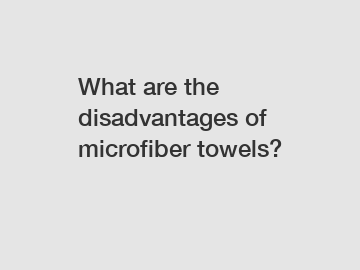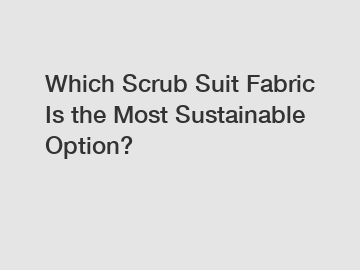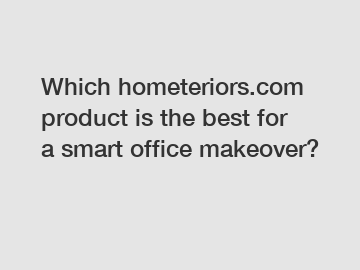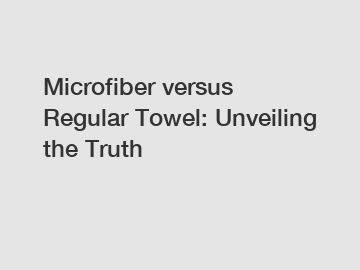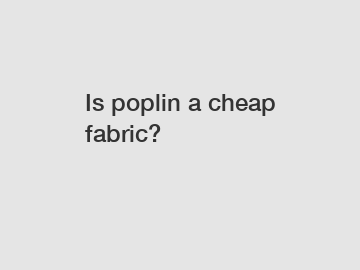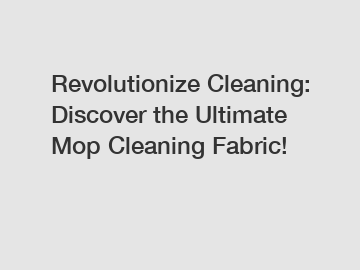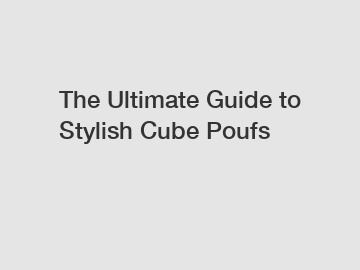The Difference Between Class 1, 2, and 3 Safety Vests
The Difference Between Class 1, 2, and 3 Safety Vests
*Disclaimer*
The information contained on this page is for promotional and informational purposes only. All equipment should be used by trained professional tradesmen who have been trained how to use the equipment described on this page, and understand the risks of their work. PowerPak assumes no responsibility for errors or omissions in the use or misuse of any product purchased. In no event shall PowerPak be liable for any direct, special, indirect, consequential, or incidental damages or any damages whatsoever, whether in an action of contract, negligence or other torts, arising out of or in connection with the use of this information or the contents of this page. PowerPak reserves the right to make additions, deletions, or modifications to the contents on this page at any time without prior notice.
Xinxing FR Product Page
If you know what you need, safety vests are very straightforward, but without all the information, you'll pay for the wrong vest. They may seem all the same, but Occupational Safety and Health Administration (OSHA) and Department of Transportation (DOT) enforcement will tell you otherwise. ANSI (American National Standards Institute) breaks down safety vests into types and classes to help narrow your search (ANSI/ISEA 107-).
Let's dive in.
Understanding Safety Vests
There are three different classes of safety vest, each geared towards specific situations. As with almost every safety situation, there is nothing wrong with opting for a vest that is a higher class than the minimum requirements for the work zone.
What Are the Types of Safety Vests?
Safety vests are categorized into 3 'types,' and each type splits into 3 'classes.'
- Type O ' Safety vests intended for Non-Roadway occupational use. Type O only has class 1 safety vests.
- Type R - Safety vests intended for Roadway occupational use. Type R has both class 2 and class 3 safety vests.
- Type P ' Safety vests for law enforcement and first responders. Type P has both class 2 and class 3 safety vests.
Type O ' Safety vests intended for Non-Roadway occupational use. Type O only has class 1 safety vests.
Type R - Safety vests intended for Roadway occupational use. Type R has both class 2 and class 3 safety vests.
Type P ' Safety vests for law enforcement and first responders. Type P has both class 2 and class 3 safety vests.
For this article, we will mainly focus on Type O and Type R safety vests. This 'type and class' system is not just for vests but for all HVSA (High Visibility Safety Apparel) such as hi-vis pants, hi-vis jumpsuits, jackets, etc.
ANSI updated its documentation defining all things safety apparel in (ANSI/ISEA 107-)
What is a Class 1 Safety Vest?
This one is simple. Class 1 is the only HVSA Type O safety vest and has the lowest required amount of high-visibility material.
Class 1 Safety Vests are for the lowest-risk areas. It could be situations where you are working a safe distance from the active roadway, but there is still potential for an incident. They have a safety yellow or safety orange background, and a minimum of 155 square inches of reflective strips. They are lightweight and sleeveless.
Class 1 safety vests are for work conditions without vehicles traveling at highway speeds. It could be where traffic is traveling no faster than 25 miles per hour. The ANSI documentation also states that the background of the worksite should not be visually complex.
Work conditions that may require class 1 vests include:
- Parking lot booth attendants
- Mineworkers
- Oil, gas, and extraction and refinery workers
- Warehouse workers
- Individuals retrieving shopping carts in parking lots
Class 1 (Type O) safety vests are required to have a minimum of the following:
- 217 sq in. (.14 sq m) of background material
- 155 sq in. (.10 sq m) of Retroreflective or Combined- Performance Materials
- Minimum of 1 in (25mm) width for Retroreflective Materials
What is a Class 2 Safety Vest?
Class 2 (Type R) HSVA safety vests have bumped up requirements. Like Class 1 (Type O), these vests are usually sleeveless.
The industry rule of thumb is to require these vests on worksites where traffic flow is 25mph ' 50mph. These safety vests are more noticeable during the day or night at greater distances when compared to class 1 safety vests.
There aren't explicit guidelines on who should be wearing class 2 vests, but examples for type R (Class 2 and Class 3) vests include:
- School crossing guards
- Public transit workers/railway workers
- Toll operators
- Road construction under 50mph
- Airport tarmac workers
- Surveyors
Class 2 Safety Vests are larger than Class 1 vests, Class 2 vests incorporate a specific amount of background material into the mix. To be a Class 2 vest, it must have no less than 775 square inches of safety yellow or safety orange background material to it. There must also be no less than 201 square inches of reflective (Reflective or Combined-Performance Materials) striping across the vest. These are required for roadway and traffic zones where traffic is moving no faster than 50 miles per hour.
Class 2 (Type R) safety vests are required to have a minimum of the following:
- 775 sq in. (.50 sq m) of background material and a minimum of 540 sq in. (.35 sq m) for small vests.
- 201 sq in. (.13 sq m) of Retroreflective or Combined- Performance Materials.
- Minimum of 1.38 in (35mm) width for Retroreflective Materials and 1 in (25mm) width for Retroreflective Materials for split trim design. We will dive into split trim later in this article.
PowerPak offers many options for those in need of class 2 safety vests.
What is a Class 3 Safety Vest?
Class 3 (Type R) HSVA safety vests have the highest material requirements compared to Class 1 and 2. The industry rule of thumb is worksites with traffic traveling over 50 mph should require Class 3 safety vests.
Class 3 Safety Vests are for the most hazardous environments where visibility is paramount. Class 3 vest provides the most background material and the most retroreflective striping. In many cases, these vests have sleeves. These vests must have, at minimum, 1,240 square inches of safety yellow or safety orange background, and at least 310 square inches of reflective striping.
Workers that may be required to wear Class 3 vests include:
- Tow truck operators
- Incident site investigators
- Road construction workers (50mph+)
- Roadside assistance
- Utility workers
Class 3 (Type R) safety vests are required to have a minimum of the following:
- sq in. (.80 sq m) of background material and a minimum of sq in. (.65 sq m) for size small vests.
- 310 sq in. (.20 sq m) of Retroreflective or Combined- Performance Materials.
- Minimum of 2 in (50mm) width for Retroreflective Materials and 1 in (25mm) width for Retroreflective Materials for split trim design.
If you're in need of class 3 safety vests quickly, PowerPak offers a wide range of options.
Safety Vest Materials
As mentioned, all ANSI classes of safety vests must have minimum amounts of TWO types of material. Background material and retroreflective material/combined performance material.
Background material and retroreflective material/combined performance material. Background material is fluorescent colored fabric, usually safety orange or safety yellow. It's the brightly colored mesh or fabric you think of when thinking of safety vests. This material is highly visible during the day.
Retro reflective material is the striping you see on safety vests. People often confuse the term retro reflective and reflective, but they are different, and they perform differently.
When light hits something reflective, like a mirror, at an angle, that light bounces off in the opposite direction. Retroreflective reflects the light directly back towards the light source. This material is highly visible at night with direction lights, such as car headlights. You'll often find retroreflective tape in silver, white, and gray.
All these materials are required to meet various ANSI standards.
A vest may have Combined-Performance material in place of retroreflective tape. Combined-performance materials/tapes have retroreflective properties and meet the fluorescent requirements of background material. Some vests have combined-performance striping that matches the background material giving the best daytime visibility without sacrificing nighttime visibility.
Vest Label
Your safety vest label should list out most of the information that you need, including:- Type
- Class
- FR rating and test method
- ARC ' rating if applicable
- Size
- ANSI standards that the vest meets.
- Care instructions. Many vests have a maximum number of times they can be washed.
What Do Safety Vest Colors Mean?
Although OSHA has no specific guidelines on vest colors, some colors work better in certain environments than others. Orange vests are ideal for settings with a lot of vegetation, a blue sky or yellow sunlight. Orange-colored vests also work well in wide-open areas, particularly in the daytime.
Yellow safety vests are perfect for night work when sunlight is minimal because fluorescent yellow is more noticeable from a distance against a dark background. Yellow vests are common among construction workers, emergency responders and utility repair people.
The general rule of thumb is to choose the most noticeable color for each specific environment. Learn more about safety vest colors here.
How Much Do Safety Vests Cost?
Depending on the supplier, vests can range anywhere from a few dollars for simple designs to several hundred dollars for products with reflective tape and multiple features. Because they have the fewest amount of safety material, Class 1 vests are typically the least expensive. As the material requirements increase, the prices generally become more expensive.
Flame and tear-resistant vests usually cost much more than those without extra durability features.
Optional Vest Features
Safety vests of any class or type can come with several features, and many worksites will require some of these options. Flame-Resistance: ANSI offers manufacturers the option of six different flame-resistant standards for rating safety vests. The test method is on the vest label.
- Arc Rated: Personal protective equipment (PPE) with an Arc rating will protect workers from electrical arc flashes. The safety vest alone will not provide adequate protection. A complete set of Arc Rated PPE is required for work conditions where electrical hazards are a threat.
- Water Resistant and Waterproof: Clearly, these options are for wet work conditions. In addition to these features, workers can opt for a vest that is both waterproof and breathable (vapor permeability). All these features must meet specific American Society for Testing and Materials (ASTM) and American Association of Textile Chemists and Colorists (AATCC) standards.
- Tear Resistance: The background material of your safety vest can be rated tear-resistant if it meets specific ASTM standards. This feature isn't often required.
- Pockets: Certain trades may require vests with specialized pockets to hold specific items or transparent pockets to display identification or credentials. Pockets also come with several features, such as dual pockets for separating items or grommet holes to dispense flagging tape.
- Identifiers: Worksites may require workers to wear vests with printed identifiers, lettering, or logos. Any graphics of non-contrasting material cannot take up more than 72 sq in. (465 sq cm) of space on the background material of the vest. Graphics of contrasting material cannot take up more than 22 sq in. (142 sq cm) of space on the background material of the vest.
- Hook and Loop Break-Away: If a vest gets caught in machinery, this feature will allow the vest to break off the worker rather than pull them into the machinery. Hook and loop strips are placed on the sides and shoulders for an easy breakaway when needed.
- Mic Tabs: Vests may feature straps on the shoulders to clipping radios or shoulder speaker mics.
- D Ring Opening: Nothing should be worn over a safety vest, including a fall protection harness. A safety vest for fall protection features a cut-out on the back to allow an unobstructed D ring.
Specialty Vests
Several types of specialty safety vests include:
- Modacrylic: Years ago, you could not buy a lightweight, durable safety vest that was flame and chemical resistant. Modacrylic is the new type of fabric used as background material instead of a polyester safety vest. As usual new means, it costs more.
- Surveyor Safety Vest: Available in Class 2 and Class 3, these vests are loaded with features. Zippers, mic tabs, grommets for tools, and many specialized pockets, just to name a few features.
- MTA ' NYCTA Safety Vest: These vests are required for Metropolitan Transportation Authority (MTA) and New York City Transit Authority (NYCTA) workers. They have a few key features, but the most notable is the retroreflective tape. This tape must meet stringent standards set by the NYCTA.
Understanding the classes is one thing, but you'll also need to consider the specifics of your worksite when it comes to choosing the best class-rated vest for your team members. Remember, there's nothing wrong with going with a Class 3 Vest for every site ' greater visibility is never a bad thing.
Consider the general visibility at your work site, how far from high-speed traffic your workers will be, and if there are physical barriers between the workers and traffic. A Class 2 vest is perfect for utility operations and volunteer work, but not good enough for flagging operations. A Class 3 vest is necessary for incident response, particularly at night, but is overkill for a landscaper. A Class 1 vest is never good enough to be worn within the right-of-way of a high-speed highway.
You should also opt for color that differentiates the worker from the environment. Safety yellow isn't going to stick out against a bright yellow or light green environment, just as safety orange won't stick out as much in a sand or desert environment.
One thing to note, as with all personal protective equipment, proper maintenance is important. The reflective qualities of the vests can diminish over time ' sun can fade them, they can get dirty, and the reflective material can rub away through heavy use. Most daily-wear vests have a service life of six months or so, while moderate use could last up to three years. If a vest is torn, dirty, soiled, worn or faded, it must be replaced before going on-site.
Beyond the Vest - Work Zone Visbility Tips
While the appropriate class-rated vests are a great start for visibility on the work site, and cover the individual, there is so much more you can do to protect your workers in traffic-heavy work zones.
- Create site plans and share them with your workers. Internal and external traffic -control plans, developed to take into account the conditions of every worksite and the traffic and workers, should be created and followed.
- Make sure the area is well lit, at day as well as at night. Install temporary lighting, and remember that even during the day, shadows can hide your workers, so they need to be illuminated.
- Utilize appropriate channeling devices to direct traffic away from your workers and around work spaces. Cones, drums, barricades, pavement markings, and portable signage all serve as warnings and alerts for drivers.
- Consider intrusion devices that can sound alarms when toppled by equipment and vehicles deviating from traffic corridors. They can alert workers that may not be able to see the intrusion.
- Educate your workers on how to act and react within your work zone, dangers to look for, and general or site-specific procedures. This includes teaching them about operator blind spots for construction equipment, how to act around heavy equipment, and how to respond if something goes wrong.
Contact PowerPak Today
Work zone safety is paramount to us here at PowerPak, and our team members are standing by to help you find the most efficient and cost-effective solution to preventing incidents stemming from poor visibility on your work site. Contact our team, they are here to help keep you and your team members safe and sound!
Hi-Vis Orange vs Hi-Vis Yellow Apparel: Which is Better?
In the world of safety apparel, welcome to the ultimate showdown: Hi-Vis Orange vs Hi-Vis Yellow! When it comes to safety apparel, visibility is key. Whether you're working on a construction site or out on the roads, being seen can literally be a matter of life and death. But which color reigns supreme? Join us as we dive into this colorful debate and uncover which shade takes the crown for being more effective in keeping workers safe. Buckle up, folks ' this is going to be one illuminating ride!
Introduction to Hi-Vis Safety Apparel
First of all, hi-vis safety apparel, also known as high visibility or hi-viz apparel, is a type of clothing designed to be easily visible in any lighting conditions. It is often worn by workers who perform tasks in low light, construction, or high-traffic areas where there is a risk of accidents.
The use of hi-vis safety apparel has become an essential aspect of workplace safety regulations in many industries such as construction, road work, and public utilities. The primary purpose of these garments is to make workers more visible and therefore reduce the risk of accidents occurring due to low visibility. And most of our hi-vis safety apparel is customizable with your company name or logo. Select from screen printing, vinyl heat press, or embroidery. Custom logos add a personal touch to your work clothes and help to promote your brand or business.
Types of Hi-Vis Safety Apparel
And there are several main types of hi-vis safety apparel: vests, jackets, and coveralls. Safety vests are the most common type and are often used in outdoor work environments. They come in various styles such as mesh or solid fabric with reflective tape for increased visibility. Our best-selling safety vests include options for men and women from brands like Radians, Pyramex, Kishigo, and PIP.
And our hi-vis safety jackets are ideal for colder climates and can provide both warmth and high visibility. They also have additional features such as hoods, pockets, and adjustable cuffs for added functionality. Also, select from high visibility orange and yellow/lime safety jackets in styles like bomber, parka, and soft shell. There are also hi-vis rain jackets, sweatshirts, and ANSI rated options.
Also, hi-vis orange and yellow color overalls offer full-body coverage and protection from hazardous materials while also providing high visibility. They are used in industries such as construction, automotive, utility, and roadwork. Portwest high visibility overalls and coveralls include ANSI Class E, 3, and Type R styles. And they have features like hoods, contrasting colors, and silver reflective tape. Hi-vis coveralls also include waterproofing, pockets, and quilt lining for added warmth and insulation.
Materials Used for Hi-Vis Safety Apparel
Hi-vis safety apparel is made from fluorescent materials that can reflect light from different sources like headlights or streetlights. These materials include polyester, nylon blends, vinyl-coated fabrics, and polyurethane-coated nylon.
Apart from the fluorescent material, hi-vis apparel also has reflective stripes or tape that reflects light back to its source. This makes the wearer more visible from all angles, even in low-light conditions. And this makes most reflective hi-vis apparel ANSI Class 2 or 3 rated for the job site.
Standards for Hi-Vis Safety Apparel
Also, in many countries, there are standards and regulations that govern the design and use of hi-vis safety apparel. These standards specify the color, materials, and construction of high-visibility garments to ensure their effectiveness in improving visibility and safety.
For example, in the United States, the American National Standards Institute (ANSI) sets standards for hi-vis apparel based on three classes:
' ANSI Class 1: The lowest level of protection intended for workers who are not exposed to traffic or moving equipment. Our Portwest PW374 PW3 Hi-vis reversible vest meets Type O Class 1 safety standards.
' ANSI Class 2: Provides medium-level protection for workers exposed to moderate traffic or moving equipment. And our ANSI Type R Class 2 safety vests include hi-vis yellow, hi-vis orange, and two-tone options.
' ANSI Class 3: The highest level of protection for workers who are frequently exposed to high-speed traffic or working in low-light conditions. Most ANSI Class 3 safety vests also have sleeves, providing additional material and visibility.
For more information, please visit Reflective Yellow Fabric for Safety Gear.
Explore more:Should you buy a Sofa in Microsuede? Yay or Nay -
Are microfiber towels good for dogs?
Can synthetic fabric be bleached?
Discover the Ultimate Cleaning Power: Unveiling the Wonders of Microfiber Terry Cloth Fabric!
What is a fluorescent fabric?
Top 7 Best Bedding Sets
Luxurious and Cozy: The Ultimate Rabbit Fur Carpet Guide
Benefits of Hi-Vis Safety Apparel
The primary benefit of hi-vis safety apparel is improved visibility. This reduces the risk of accidents and injuries in hazardous work environments. It also allows workers to stay identifiable on job sites, making it easier to monitor their location and movements.
The Importance of High Visibility in Work Environments
Most noteworthy, the importance of high visibility in work environments cannot be overstated. In industries such as construction, roadwork, and manufacturing, workers face exposure to potential hazards on a daily basis. In order to ensure their safety, it is essential for them to remain seen by others on the job site.
High visibility apparel plays a crucial role in creating a safe work environment. This type of clothing features bright colors and reflective materials that make workers stand out from their surroundings. Hi-vis apparel comes in two main colors ' orange and yellow ' both of which have their own unique benefits.
One of the key reasons why high visibility is so important in work environments is because it allows for better communication between workers. When everyone on the job site can easily see each other, it becomes easier to coordinate tasks and avoid accidents. For example, if one worker needs to operate heavy machinery near another worker, being able to clearly see each other can prevent potential collisions or injury.
In addition, high visibility also increases worker safety when working around moving vehicles or equipment. Brightly colored hi-vis apparel allows drivers to spot workers from a distance and take necessary precautions while operating their vehicles. This is especially crucial in low light conditions. Or during bad weather when visibility is reduced.
Understanding the Difference between Hi-Vis Orange and Hi-Vis Yellow
When it comes to safety apparel, high visibility is a crucial factor. Workers in industries such as construction, roadwork, and mining require high-visibility clothing to ensure their safety on the job site. High visibility apparel comes in two main colors ' orange and yellow. Both these colors serve the purpose of making workers more visible, but there are some differences between them that are important to understand.
Hi-Vis Orange
Hi-Vis orange is a vibrant shade of orange used for safety apparel. This color contrasts with most backgrounds, allowing workers to remain visible in low-light conditions or inclement weather. Hi-Vis orange is also known as 'blaze' or 'safety' orange. And is highly effective in catching the attention of others. And our orange color safety apparel includes safety vests, jackets, shirts, and coveralls.
One of the main advantages of hi-vis orange over hi-vis yellow is its ability to stand out against certain backgrounds. In environments with a lot of greenery or foliage, hi-vis orange can be more noticeable than hi-vis yellow. This makes it a popular choice for outdoor workers who need to be seen in natural settings. Our best-selling high visibility orange safety apparel includes brands like Radians, Kishigo, MCR Safety, and Pyramex.
In addition, hi-vis orange improves depth perception compared to other colors like yellow or red. This can be particularly beneficial for workers who need accurate depth perception while working with heavy machinery or equipment. Our orange safety apparel includes styles and sizes for men and women. There is also a large range of sizes from popular series like GloWear, Luminator, and Brilliant.
Hi-Vis Yellow
Hi-Vis yellow is a bright shade of yellow that is also used for safety apparel. This color is often referred to as 'fluorescent' or 'safety' yellow. And stands out against most backgrounds. And some hi-vis yellow safety apparel includes lime shades, making them known as hi-vis 'yellow/lime'.
One of the main advantages of hi-vis yellow over hi-vis orange is its effectiveness in low-light conditions. The human eye can detect shades of yellow better than any other color, making it easier to spot someone wearing hi-vis yellow in dim lighting. And hi-vis yellow safety shirts like the Radians ST11 meet ANSI Type R Class 2 safety standards for the job site. The silver reflective tape helps enhance visibility.
However, one potential drawback of hi-vis yellow is its ability to blend in with certain backgrounds. In environments with a lot of foliage or greenery, workers wearing hi-vis yellow may not stand out as well as those wearing hi-vis orange.
Which one should you choose?
Ultimately, the choice between hi-vis orange and hi-vis yellow will depend on your specific work environment and personal preferences. If you work outdoors in natural settings with a lot of greenery or foliage, hi-vis orange may be a better choice. If you work in low light conditions or need to stand out against darker skin tones, hi-vis yellow may be a more effective option.
Many companies also choose to use a combination of both colors for their employees' safety apparel. This can provide the best of both worlds and ensure maximum visibility in various situations. Whichever color you choose, it is important to regularly inspect and replace high visibility apparel as needed to maintain its effectiveness.
Factors to Consider
When it comes to safety apparel, choosing the right color is essential for ensuring maximum visibility and protection. In industries such as construction, road work, and emergency services, high-visibility clothing is a crucial element in preventing accidents and keeping workers safe. Two of the most popular colors for hi-vis apparel are orange and yellow. Both offer high levels of visibility, but there are several key factors to consider when deciding between them.
1. Environment/Worksite Conditions: When deciding between hi-vis orange and yellow, you should primarily consider the environment or worksite conditions in which you'll wear it. Orange may be more effective in low-light or overcast conditions because it offers a higher contrast against most backgrounds. On the other hand, yellow may be more suitable for bright, sunny environments as it reflects light better.
2. Job Requirements: The nature of the job being performed should also play a significant role in color selection. For example, if workers are performing tasks near moving vehicles or heavy machinery that emits orange light (e.g., sodium vapor lamps), wearing hi-vis orange may not provide enough contrast for effective visibility. In this case, yellow may be a better choice.
3. Personal Preference: Some individuals have personal preferences towards one color over another based on visual acuity or personal style. It's important to take into account what feels most comfortable and visible for each worker when making color decisions.
More Factors to Consider
4. Compliance with Standards: Hi-vis apparel must meet specific standards set by regulatory bodies such as the Occupational Safety and Health Administration (OSHA). And the American National Standards Institute (ANSI). These standards outline the minimum requirements for color, reflective material, and design of safety apparel. Make sure to check these standards before choosing between orange and yellow.
5. Visibility Distance: The distance at which a person can be seen depends on various factors such as background color, lighting conditions, weather, and worker movement. Overall, orange suits longer distances better than yellow. However, in dense or cluttered environments like forests with limited visibility distance, yellow might be more effective.
6. Color Fastness: Hi-vis apparel must maintain its color over time for maximum visibility. Orange tends to fade faster than yellow due to its chemical composition. If your workers will be wearing their safety gear frequently or under harsh conditions, consider choosing yellow over orange for long-lasting visibility. And our low-price economy safety vests allow you to swap out for new, bright, and clean vest for optimum safety.
7. Complementary Colors: In some worksites or industries, certain colors may already be prevalent or required (e.g., blue for law enforcement). In these cases, it may be better to choose a hi-vis color that complements the existing colors rather than clashes with them. Our blue safety vests also include two-tone options. These types of vests combine hi-vis yellow with silver reflective like the PIP 300- non-ANSI vest.
Visibility in Different Lighting Conditions
Visibility in different lighting conditions is a critical factor to consider when choosing between hi-vis orange and hi-vis yellow safety apparel. Both colors are highly visible during the day, but their effectiveness can vary in low-light or nighttime situations.
In broad daylight, both hi-vis orange and hi-vis yellow stand out against most backgrounds due to their high levels of contrast with natural surroundings. This makes them equally effective options for increasing visibility and safety on worksites or in outdoor environments.
However, as the lighting conditions change, the performance of these two colors may differ. In low light or overcast weather, hi-vis orange tends to maintain its bright color more effectively than hi-vis yellow. This is because orange has longer wavelengths than yellow, making it easier for our eyes to detect in dimmer lighting.
Natural and Artificial Light
At dawn or dusk when there is limited natural light available, both colors may lose some of their vibrancy. However, studies have shown that hi-vis orange remains visible up to 40% longer than hi-vis yellow under these conditions. This means that workers wearing orange safety apparel will remain visible for a longer period before needing additional artificial lighting sources compared to those wearing yellow.
When workers face artificial lighting sources like streetlights or vehicle headlights at night, choosing between hi-vis orange and hi-vis yellow becomes even more critical. The reflective properties of these colors can make a significant difference in how quickly they catch the attention of drivers or equipment operators.
Hi-Vis yellow is often considered more effective than orange in these situations due to its high contrast with artificial light sources. The bright yellow color stands out against most backgrounds, making it easier for drivers to spot workers on the job site or on the road.
Overall, both hi-vis yellow and hi-vis orange provide excellent visibility in different lighting conditions. However, if you are working in low light or nighttime situations, hi-vis orange may be a slightly more effective option due to its longer wavelength and ability to maintain its brightness for a longer period.
Color Preference
In addition to visibility and safety considerations, personal preference may also play a role in choosing between hi-vis orange and hi-vis yellow safety apparel. Some individuals may have a strong preference for one color over the other based on personal experiences or associations with certain colors.
For example, some people may associate hi-vis orange with construction sites or roadwork. While others may have a negative connotation with this color due to its use in warning signs and traffic cones. Similarly, some individuals may prefer the eye-catching brightness of hi-vis yellow, while others find it too intense or distracting.
Effectiveness for Specific Work Environments
When it comes to safety apparel, one of the most debated factors is the color choice between hi-vis orange and hi-vis yellow. People commonly use both colors for high visibility clothing in various work environments, but which one is more effective? In this section, we will delve into the effectiveness of each color for specific work environments.
Construction Sites:
Construction sites have a busy and hazardous nature, making high-visibility clothing essential. When it comes to construction sites, both hi-vis orange and hi-vis yellow have their own advantages. Hi-vis orange is highly effective in low light conditions or during sunrise and sunset when there may be a mix of natural light and artificial light. The color stands out against common construction materials such as concrete or metal. On the other hand, hi-vis yellow is highly visible under bright sunlight. And can quickly catch the attention of workers and equipment operators on site.
Road Construction:
Also, just like construction sites, road construction areas also require high visibility clothing for workers' safety. In this environment, hi-vis orange has a slight edge over hi-vis yellow due to its ability to stand out against different backgrounds such as asphalt or dirt roads. It also helps in directing traffic as it contrasts with red traffic signs and cones used on road construction sites.
Industrial Uses
Warehouse/Facility Work:
For workers in warehouses or industrial facilities that have low lighting or dimly lit areas, hi-vis orange would be more effective than hi-vis yellow. The color's brightness makes it easier to spot workers even in low light conditions, ensuring their safety. And our lightweight safety shirts include mesh options that are breathable. This helps keep you cool while working in warehouses and enhances your visibility to other workers.
Emergency Responders:
Emergency responders, such as firefighters and EMS personnel, commonly use both hi-vis orange and hi-vis yellow. In this case, the color choice may come down to personal preference or department guidelines. However, people generally consider hi-vis orange more effective because it stands out against common emergency vehicle colors like red or white.
Outdoor Landscaping/Gardening:
For workers in outdoor landscaping and gardening environments, both hi-vis orange and hi-vis yellow can be effective. However, hi-vis yellow may be a better choice as it contrasts with natural elements such as green grass and trees.
Comparison of Brightness and Reflectivity
Brightness:
The first aspect to consider when comparing these two colors is their brightness level. Brightness refers to how intense a color appears to be. In terms of brightness, both orange and yellow are considered highly visible colors. However, studies have shown that during daylight hours, fluorescent orange has a higher LRV (Light Reflectance Value) than fluorescent yellow.
LRV is a numerical value used to measure the amount of visible light reflected by a surface. The higher the LRV number, the brighter the color appears. Fluorescent orange has an LRV range of 55-65%, while fluorescent yellow has an LRV range of 40-50%. Under natural lighting conditions, hi-vis orange stands out more and people can see it from a greater distance compared to hi-vis yellow.
Reflectivity:
And the second factor that determines visibility is reflectivity. Reflectivity indicates how much light a material returns when it encounters a light source. In terms of reflectivity, both colors have similar levels. Manufacturers use reflective materials like retroreflective tapes to make both fluorescent orange and fluorescent yellow. This increases visibility in low-light conditions.
However, the amount of reflectivity can vary depending on the quality and placement of the reflective material. For example, a high-quality reflective tape placed on a larger surface area will provide better reflectivity than a lower-quality tape on a smaller surface area. And our reflective clothing also includes accessories like hats, pants, gloves, and beanies. The hi-vis colors feature the same silver reflective tape as our safety apparel, completing the overall safety of the outfit.
Which color is better for hi-vis apparel?
Both hi-vis orange and hi-vis yellow are effective choices for safety apparel. However, if you are working in an environment with natural lighting, such as construction sites or road work zones, hi-vis orange may provide better visibility during the day due to its higher LRV value. On the other hand, if you are working in low-light conditions, both colors will offer similar levels of reflectivity.
Conclusion
In conclusion, both hi-vis orange and hi-vis yellow safety apparel have their own benefits and effectiveness. It ultimately depends on the specific working environment and personal preference. However, it is important to always prioritize safety by wearing high-visibility clothing that meets industry standards. Whether you choose orange or yellow, remember that these colors serve as a crucial warning sign for others to see you in potentially hazardous situations. Stay safe out there!
Like this:
Like
Loading...
Want more information on High Visibility Yellow Fabric Wholesale? Feel free to contact us.
What not to use on microfiber?
Unleashing the Trend: Gray Fabric Elegance
Which glass polishing cloth offers the utmost shine?
How do you clean microfiber mats?
Which Flame-Resistant Textile Complies with ASTM D6413 Standards in Style?""When it comes to ASTM D6413, which flame-resistant textile option provides the best blend of safety and fashion-forward desi
Is it OK for outdoor rugs to get wet?
How are printed towels made?



